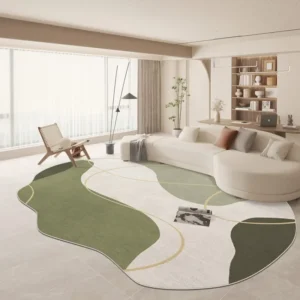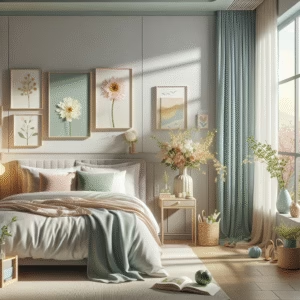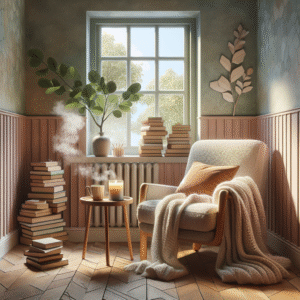Ever walked into a room and felt a wave of comfort? That’s the power of modern textures in interior styling! They transform ordinary spaces into extraordinary ones, offering depth, warmth, and personality. But how do we choose the right textures to create that inviting atmosphere?
In this comprehensive guide, you’ll learn how to incorporate various textures into your home decor, explore current trends, and uncover practical tips to enhance your living spaces. We’ll delve into the anatomy of texture, blending them harmoniously for maximum impact.
Let’s get started!
The Anatomy of Texture in Interior Design
What is Texture?
Texture refers to the surface quality of an object. It can be tactile (how it feels) or visual (how it appears). Understanding texture is essential in interior styling, as it profoundly influences the mood and functionality of a space.
Types of Textures
- Tactile Textures: These are textures you feel, such as the smoothness of a marble countertop or the plushness of a velvet cushion.
- Visual Textures: These textures are seen rather than touched, like the intricate pattern of wallpaper or the grain of wood.
Current Trends in Modern Textures
As interior design evolves, so do the textures we use. Here are some of the most popular trends:
Natural Textures
Bringing nature indoors is a major theme. Think stone, wood, and organic fabrics that evoke a sense of calm.
Layering Textures
Combining different materials adds depth. Layer a chunky knit blanket over a smooth leather sofa to create visual interest.
How to Incorporate Textures into Your Home
Step 1: Assess Your Space
Begin by evaluating the existing textures in your space. Identify areas that feel flat and could benefit from added depth.
Step 2: Choose a Color Palette
Select a cohesive color palette that complements the textures you’re introducing. Harmonious colors unify various materials.
Step 3: Mix and Match
Don’t be afraid to mix textures. Combine rough and smooth surfaces, soft fabrics with hard finishes, and light with dark materials.
Comparative Analysis of Popular Textures
| Texture | Pros | Cons |
|---|---|---|
| Wood | Warmth, durability | Can warp with moisture |
| Fabric | Softness, variety | Stains easily |
Case Studies: Successful Texture Implementation
Home Office Revamp
A recent project transformed a dull home office into an inspiring workspace by combining matte black furniture with soft beige textiles. The balance created a motivating atmosphere while retaining elegance.
Tools and Resources
For those looking to experiment with textures, here are some recommended tools:
- Fabric Sample Kits: Get swatches to compare different fabric textures.
- Design Apps: Use apps like Houzz or Pinterest to visualize combinations.
FAQs About Modern Textures in Interior Styling
What are the best textures for small spaces?
Light textures like sheer fabrics and smooth surfaces create an airy feel, making small spaces feel larger.
How can I add texture to a minimalist design?
Incorporate subtle textures through textiles or unique furnishings while maintaining a clean aesthetic.
Conclusion
Incorporating modern textures into your interior styling can dramatically enhance your living spaces, creating a realm of comfort and visual intrigue. Remember the key takeaways: assess your space, mix and match thoughtfully, and embrace current trends. Let your home reflect your personality and lifestyle through the artful use of texture!
If you found this guide helpful, consider exploring our related articles on interior design trends and styling tips.
Content Disclaimer
This article provides information for educational purposes only. For personalized advice, please consult a design professional.
Categories
- Accent Walls & Ceilings (18)
- Art Curation & Gallery (33)
- Bedding Style Trends (43)
- Bedroom Makeover (38)
- Bohemian & Eclectic Styles (18)
- DIY & Budget-Friendly Decor (17)
- Eco-Friendly Design (19)
- Furniture Care (37)
- Home Decor & Design Ideas (109)
- Home Wellness Spaces (18)
- Integrated Outdoor Living (17)
- Kids and Nursery Decor (18)
- Living Room Decor (38)
- Minimalist & Japandi Style (21)
- Mix & Match Techniques (37)
- Modern & Contemporary Design (17)
- Rug Sizing & Placement (37)
- Seasonal Home Decor (40)
- Small Space Solutions (22)
- Wall Art & Painting Tips (40)
Recent Comments
Archives
Product Gallery
-
 Large Area Green Rugs for Bedroom Nordic Living Room Decoration Shaped Carpet Irregular Plush Lounge Rug Home Thick Washable Mat Rated 5.00 out of 5$56.95 – $359.13Price range: $56.95 through $359.13
Large Area Green Rugs for Bedroom Nordic Living Room Decoration Shaped Carpet Irregular Plush Lounge Rug Home Thick Washable Mat Rated 5.00 out of 5$56.95 – $359.13Price range: $56.95 through $359.13 -
 Nordic Style Rugs for Bedroom Morandi Living Room Decoration Carpet Large Area Geometry Lounge Rug Home Cloakroom Non-slip Mat Rated 5.00 out of 5$40.93 – $620.00Price range: $40.93 through $620.00
Nordic Style Rugs for Bedroom Morandi Living Room Decoration Carpet Large Area Geometry Lounge Rug Home Cloakroom Non-slip Mat Rated 5.00 out of 5$40.93 – $620.00Price range: $40.93 through $620.00 -
 Irregular Shapes Living Room Decoration Carpet Modern Style Rugs for Bedroom Home Thicken Plush Rug Fluffy Soft Lounge Floor Mat Rated 4.75 out of 5$57.89 – $360.12Price range: $57.89 through $360.12
Irregular Shapes Living Room Decoration Carpet Modern Style Rugs for Bedroom Home Thicken Plush Rug Fluffy Soft Lounge Floor Mat Rated 4.75 out of 5$57.89 – $360.12Price range: $57.89 through $360.12







